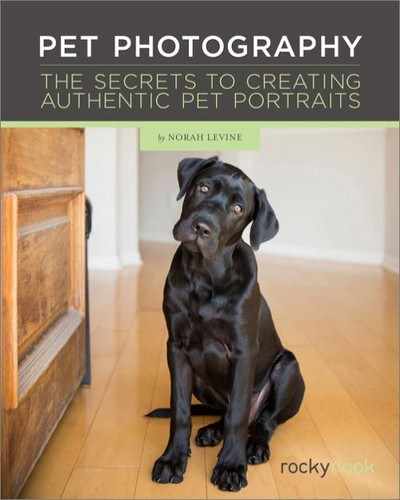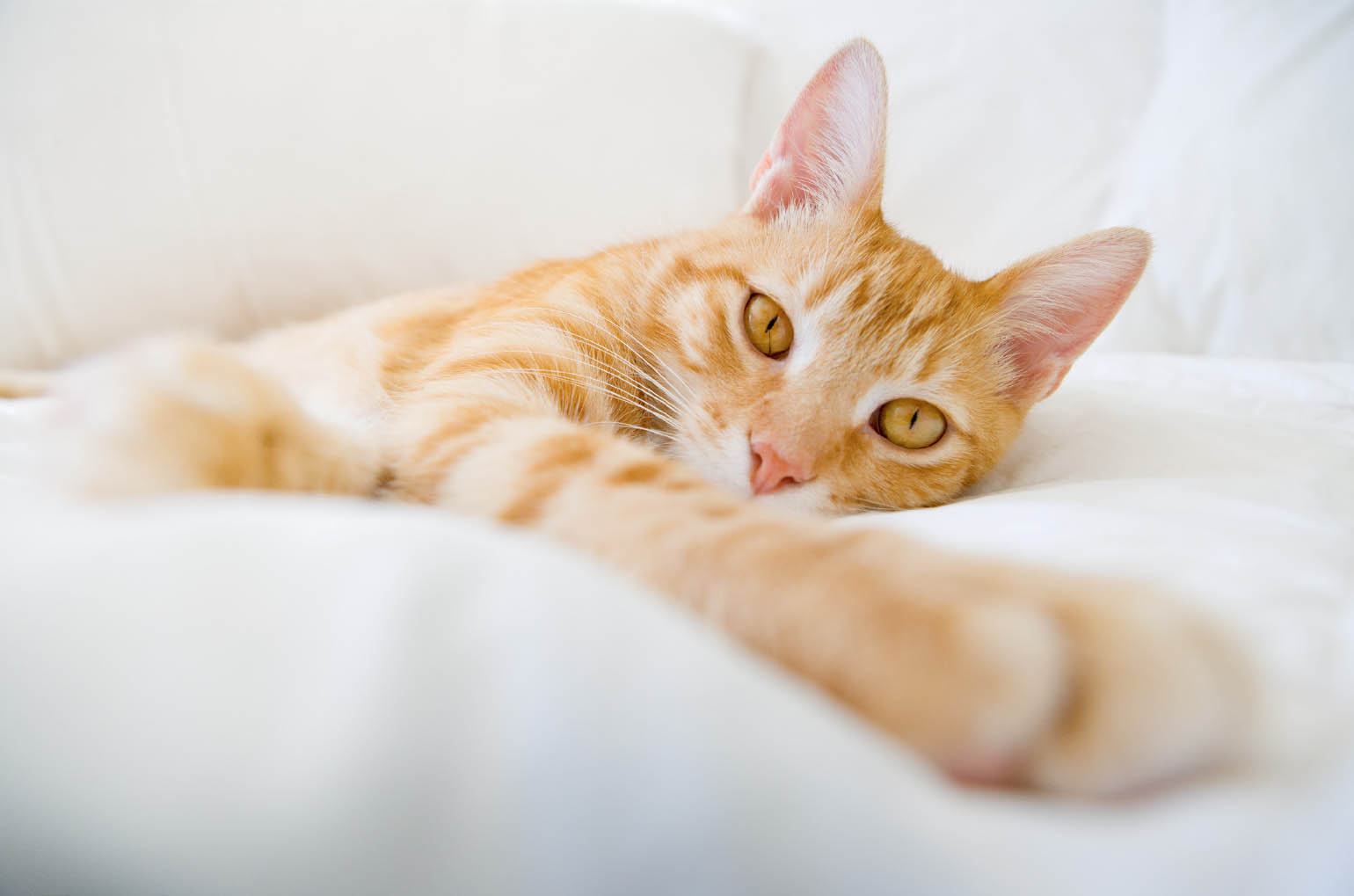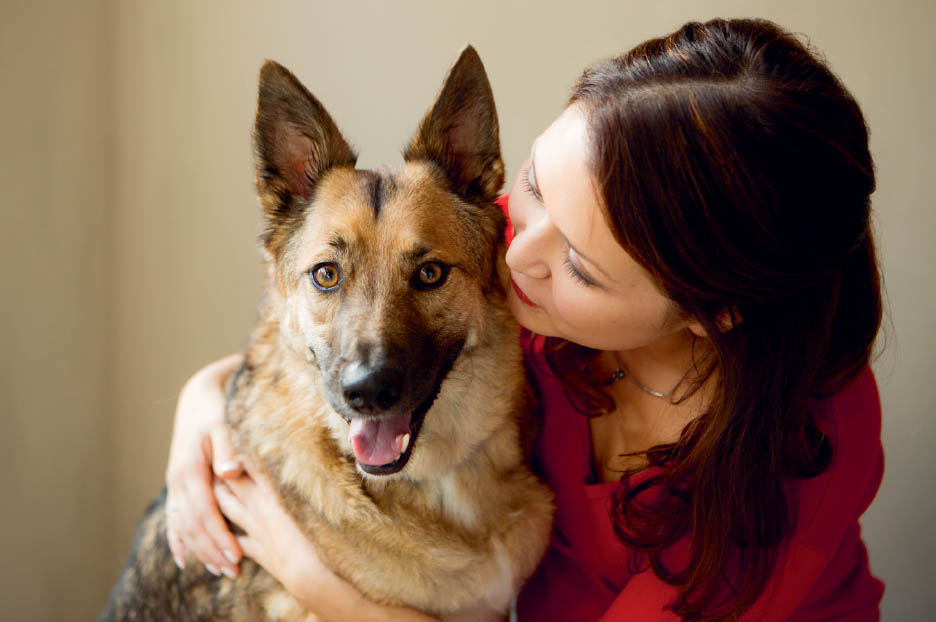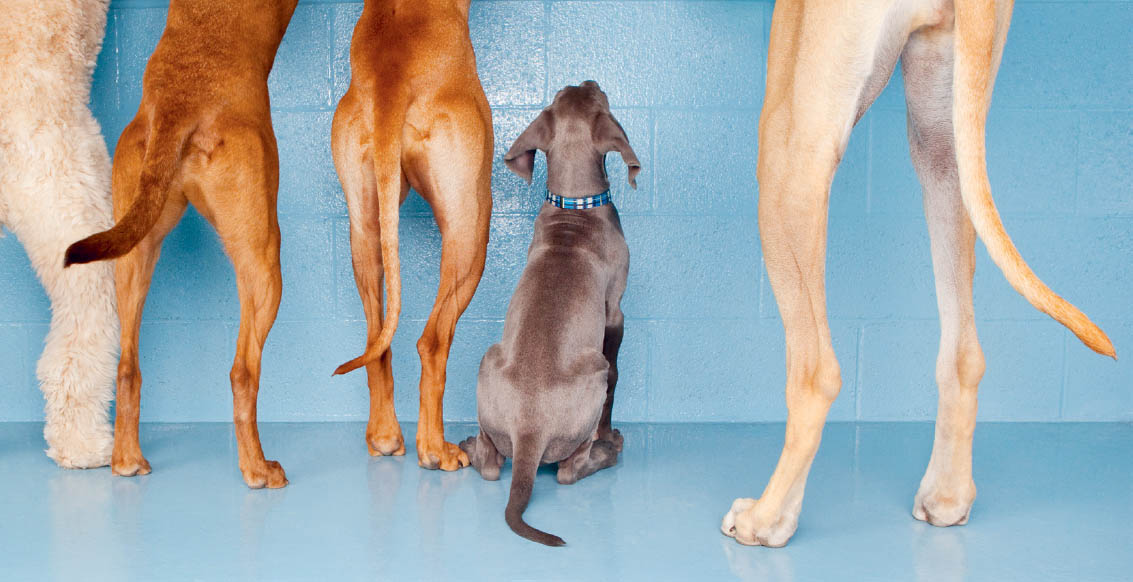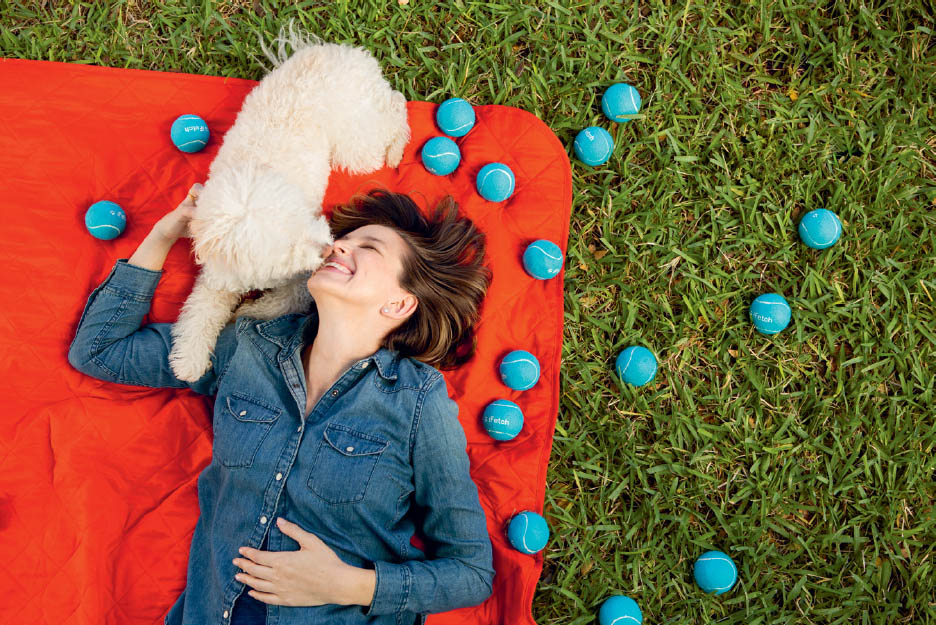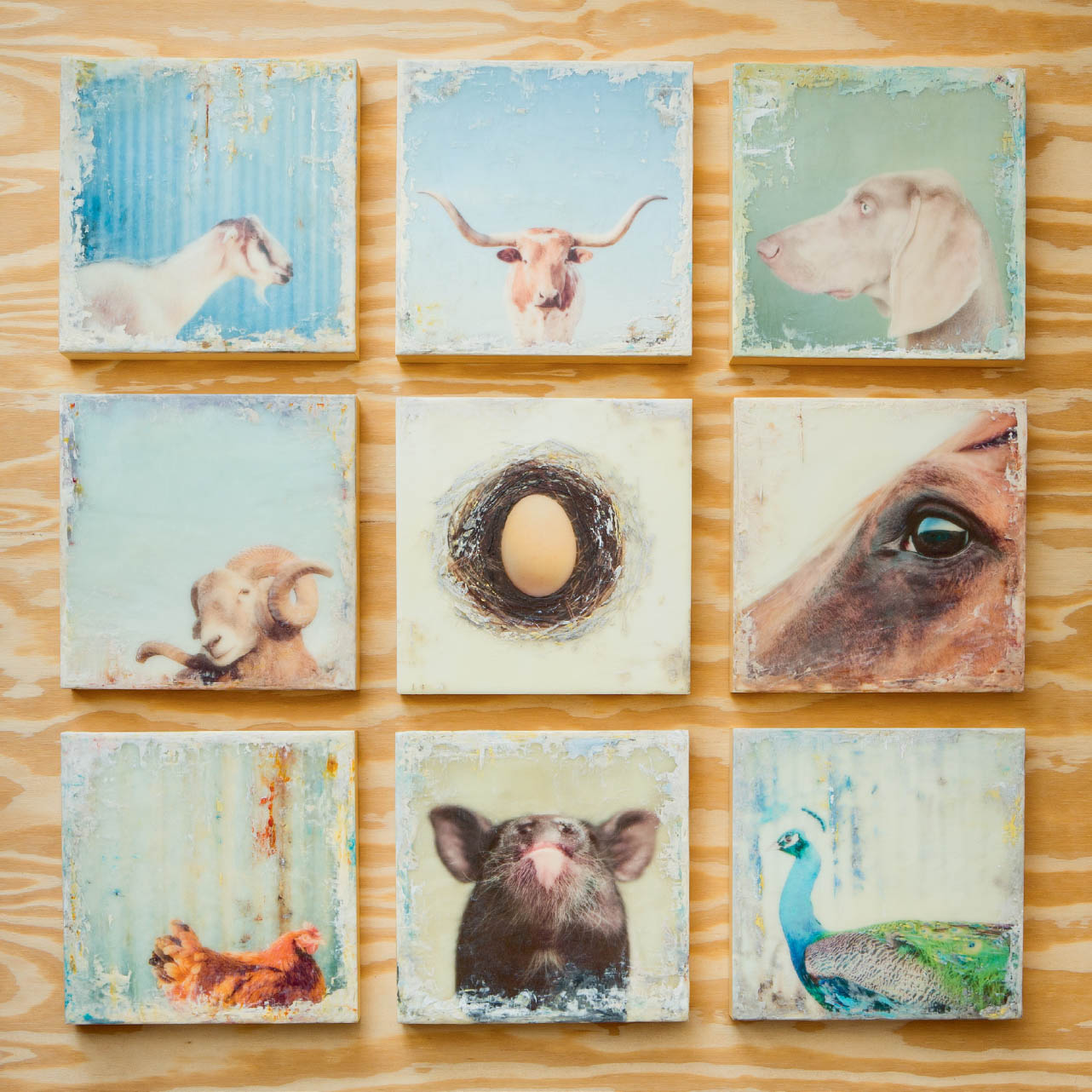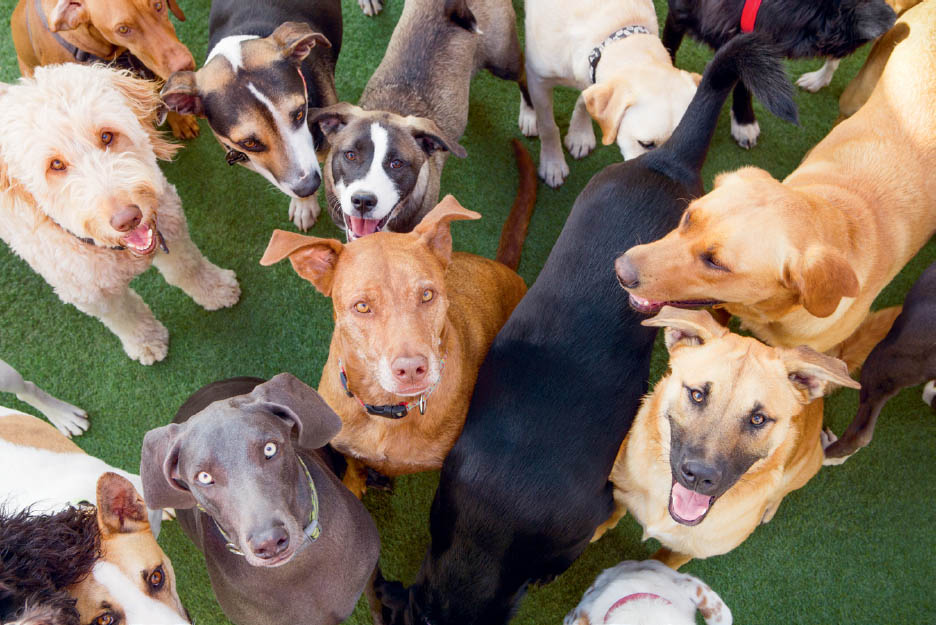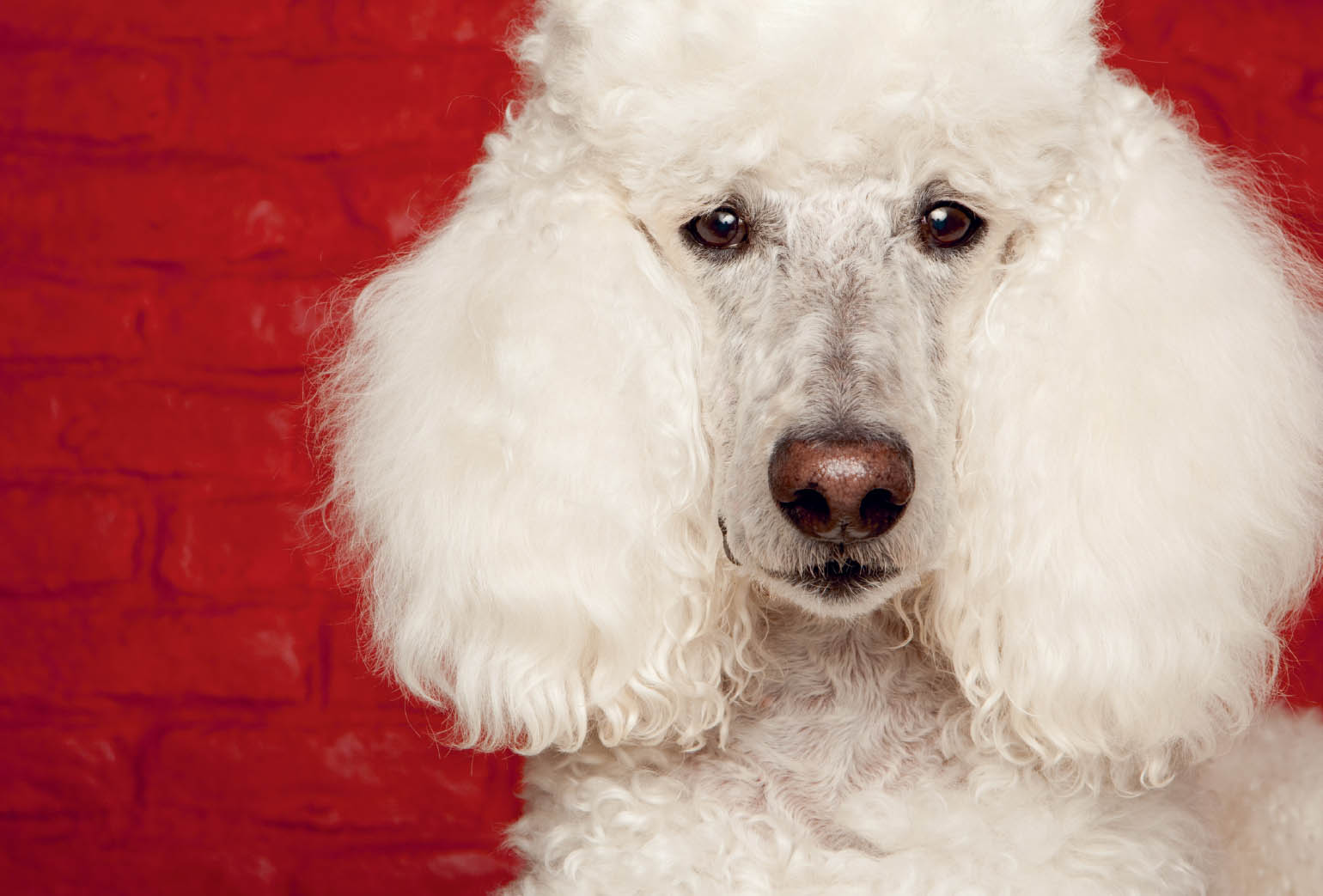CHAPTER 1: DISCOVERING OPPORTUNITIES, CHALLENGES, AND REWARDS
We are starting this journey together by taking a close look at the many opportunities—both the challenging and the rewarding—that pet photography can offer. (Yes, there are challenges but the rewards are yummy!) Pet photography has many different facets, leaving lots of room for creative application. The ways we approach this type of photography can vary greatly based on our desires and goals. Rather than becoming overwhelmed by the options, we’ll begin by asking some valuable questions, which will hopefully provide clarity. The goal of answering these questions is to determine what we want so that we can begin to develop an approach to the genre of pet photography that allows us to feel the most fulfilled.
The information in this chapter addresses anyone interested in pet photography—those of you who are just beginning to delve into this category and others who have already been exploring pet imagery but are looking for some inspiration or new direction. These ideas can also serve as a brainstorm for any photographer wishing to become aware of the many opportunities available in pet photography.
I applaud all of you for showing up to explore, and I’m committed to supporting you in your journey.
Consulting with ourselves about what is driving us to creating pet portraits can provide useful information about how to move forward creatively. The inquiry process can benefit those of you who are just starting out in pet photography, as well as people with a bit more pet photography experience. As I mentioned earlier in the chapter, I believe there is great value in the process of occasionally “checking in” about your priorities and motivation. The inquiry process has helped me tremendously over the years.
To determine what we need with regard to our photographic experience, begin by asking the question, “Why?” Through this process, we can start to figure out how we want to integrate our photography with the animal world and say yes to situations that support opportunities aligning with our values. Spending some time in inquiry can also help us gain insight on when to pass on opportunities that don’t quite fit with our needs. Try not to get overwhelmed by having the “right” response to these questions (because there isn’t one). Consider recognizing that all you can really do is make decisions based on what you know in your life right now. Keep in mind that your responses to the questions today may very well be different in a year or six months from now. That’s totally perfect!

WHY DO YOU WANT TO CREATE PET PORTRAITS?
AM I INTERESTED IN INTIMATE MOMENTS, WORKING ONE-ON-ONE WITH AN ANIMAL AS A PRIORITY?
Perhaps you really love the idea of working individually with animals because it offers you an opportunity to take your time and really get to know them and play with them. Interacting with animals might be a top priority for you as part of your photographic practice. Alternatively, you may love the idea of working with animals along with a team of people to support you in a commercial setting or faster-paced scenario. Maybe one-on-one interaction isn’t as important to you, but you love the aesthetic qualities in animals and the visual part of the process is more important. What do you tend to lean toward?
AM I INTERESTED IN WORKING WITH MANY ANIMALS AT ONCE?
Maybe you’re intrigued by visually capturing many different characters within one photo session. This can be exciting and provide variety in your portfolio and experience. A few ways this can become a reality are by photographing in an animal shelter or sanctuary, a dog daycare environment, a special event, or a show.
IS IT IMPORTANT FOR ME TO CONTRIBUTE TO MAKING A DIFFERENCE IN THE ANIMAL WELFARE WORLD? WOULD THAT BE FULFILLING TO ME?
Perhaps you have an affinity for rescue dogs or cats and have adopted all you can currently justify. You may also be looking for ways to give back using your creative skills and you have the feeling that collaborating with animal welfare groups is a good fit. This may also not fit into your current vision, which is absolutely fine. Again, this is a good opportunity to gather information for yourself.
DO I NOT WANT TO WORK WITH PEOPLE ANYMORE?
This one is sneaky. While there are ways to work more heavily with animals than with people in pet photography, it is not possible to eliminate people from the equation (unless we can somehow teach dogs, cats, and horses to email and make phone calls!).
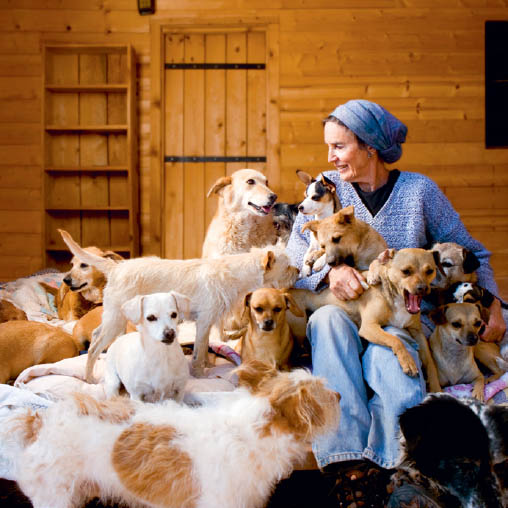
Natalie Owings with the many dogs housed at The Heart and Soul Animal Sanctuary near Santa Fe, New Mexico.
IF I KNEW HOW TO _____________, I WOULD FEEL MORE CONFIDENT PHOTOGRAPHING PETS.
Perhaps you already know of a specific direction you’d like to take with pet photography, but you feel that there is something holding you back, either technically or logistically. Getting clear on what might be holding you back can be a huge step forward. Perhaps you feel limited because of lack of experience, technical knowledge, people skills, an understanding of animal behavior, or creativity. Not to worry! I’ll be covering all of these potential issues.
WHAT TYPES OF PETS DO I WANT TO WORK WITH AND SPEND TIME PHOTOGRAPHING?
If the answer is “dogs only,” that’s perfectly acceptable. If you want to start a pet photography business but don’t want to photograph horses or cats, that’s perfectly fine. If you want to volunteer at an animal shelter and work with cats only, there are ways to do that. There are no rules about the types of animals you photograph, and being clear on what you’re interested in will help you make decisions about how to move forward with your process.
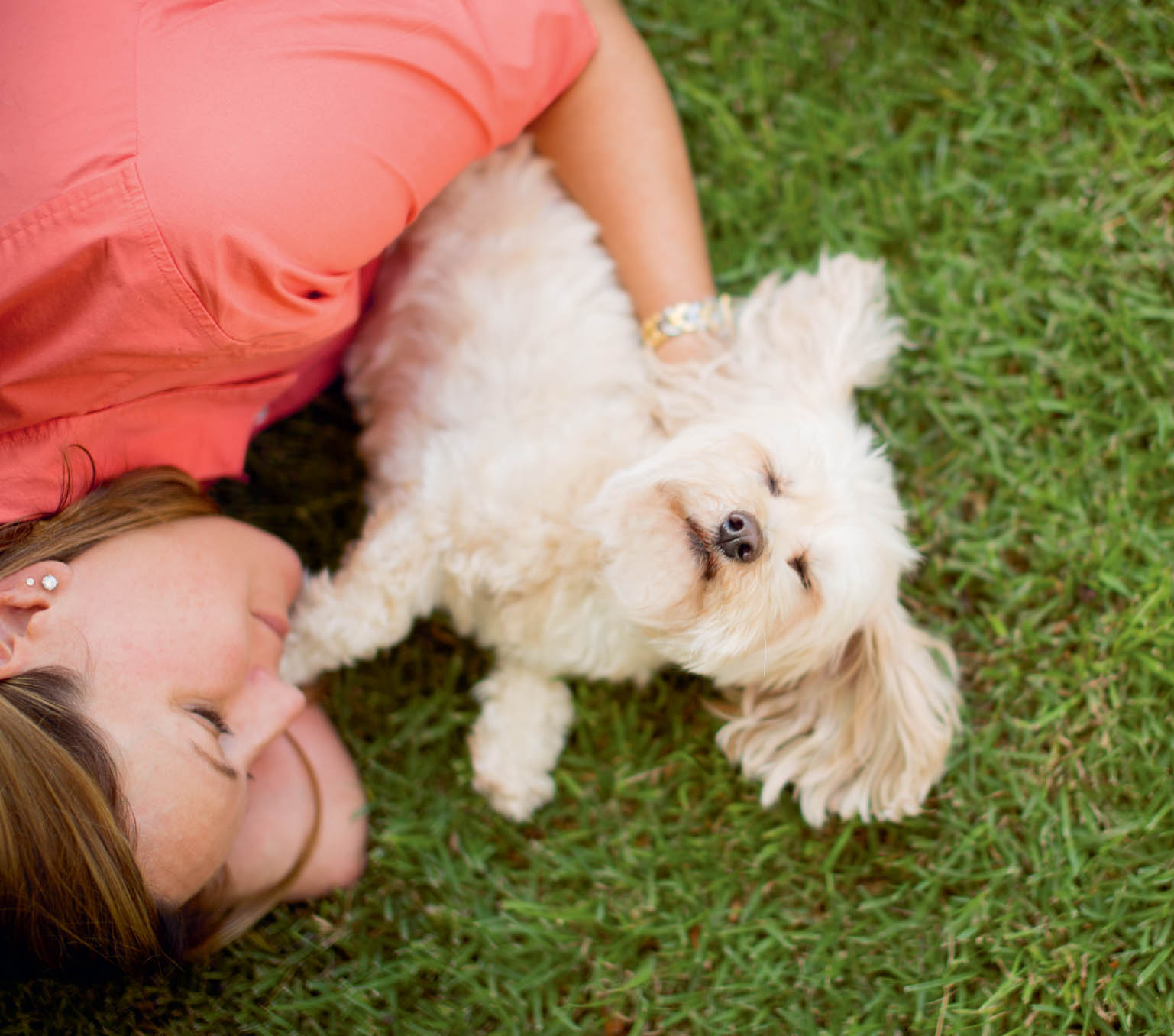
Do you have an interest in photographing pets individually or also with their people?
IS MY PREFERENCE TO PHOTOGRAPH PETS INDIVIDUALLY?
Photographing pets individually is very different from creating images of pets with their people. Maybe you are mostly interested in working with pets individually, but are curious about what it would be like to photograph pets with people. Try to get a sense of what you’re more drawn to and start there. If you start with pets individually and begin to feel more comfortable, consider adding people to the equation. When I first started working with pets, I focused on pets individually; now, years later, I have acquired an affinity for capturing the connection between human and animal.
WHAT ARE THE OPPORTUNITIES TO WORK WITH PETS WHERE I LIVE?
If you love photographing horses and you live in the city, you may have to figure out a way to gain access to horse subjects and communities. Are there lots of pet-related businesses in your area? Perhaps you take your dog to a daycare facility and could use that connection to gain access to dog subjects. Are there dog, cat, or horse shows occurring in your city or town? Do you notice a lot of pet-friendly businesses near you? Being aware of what’s available to you can help in terms of finding subjects to photograph. If starting a pet photography business is one of your priorities, begin by building some knowledge about your local animal community.
DO I WANT TO EARN MONEY WITH MY PET PHOTOGRAPHY?
This question can refer to your need to generate income, but also your desire to include making money as part of the experience of photographing pets. Again, there are no wrong answers here, and you may not know the answer just yet. The reality is that while photography has become more affordable and accessible in many ways, investing in good equipment is not inexpensive. Having said that, you may have enough money to buy a decent camera, a laptop computer, and the software you need to edit your images. That’s a pretty great place to start. But if you have specific goals in mind, it’s a good idea to be aware of the financial aspect. For example, with studio photography, there are significant investment requirements for lighting equipment and modifiers. Updating digital cameras and software and maintaining an online presence have become regular expenses for photographers.
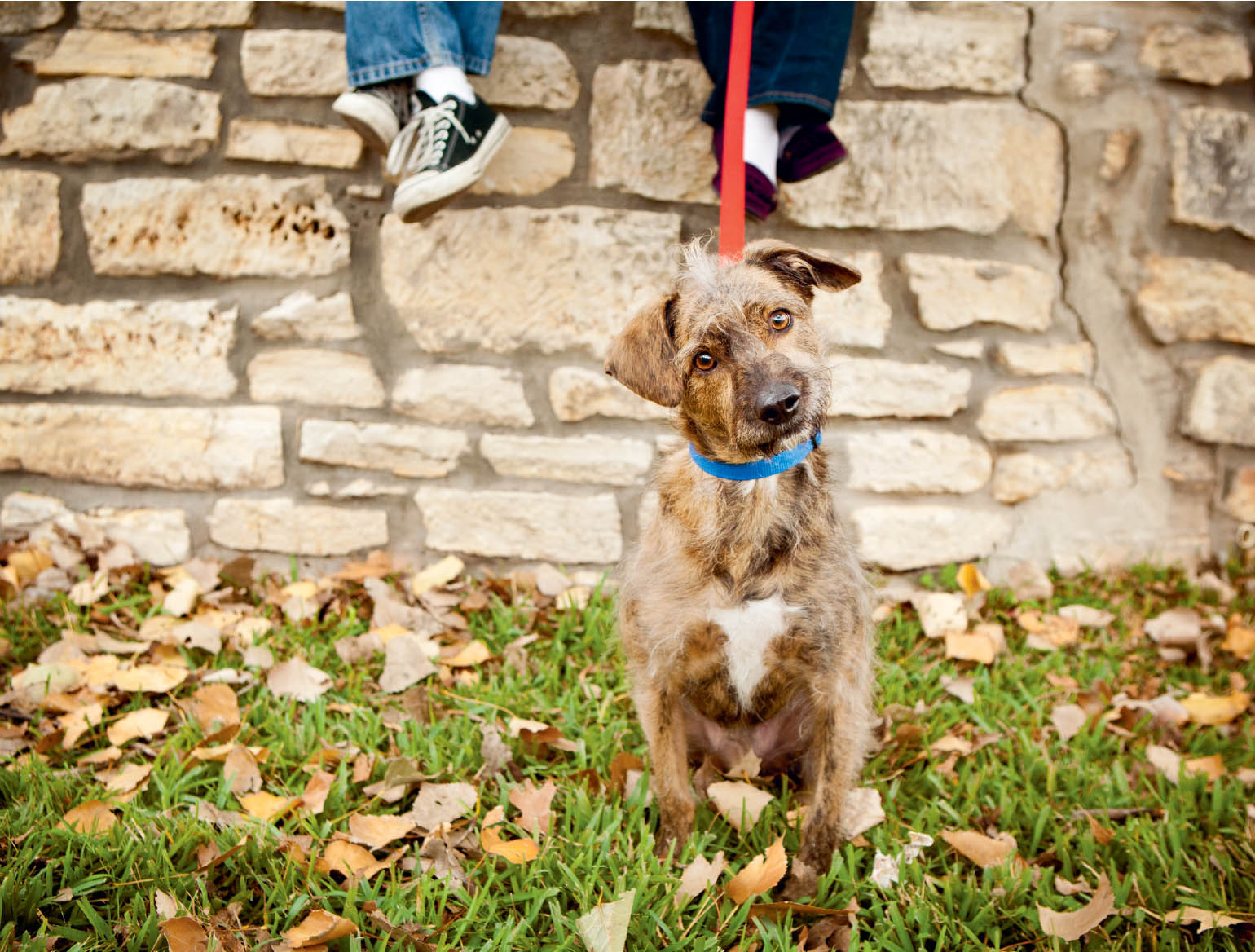
If you decide to photograph for money, you’ll need a portfolio of images to represent the type of work you’d like to create for potential clients, and you’ll need the equipment to do this. Some of these expenses exist whether you choose to try to generate income with your pet photography or not.
If income isn’t a required result (either financially or emotionally) of your pet photography, you may choose to photograph pets as they’re accessible to you in order to hone your skills for your own personal growth and satisfaction, or volunteer your services to help animals. This is a perfectly legitimate and honorable direction to take when photographing pets. You may also choose to start out with your pet photography as a hobby, and later feel that you might want to experience working as a pet photographer for income. Sometimes these answers present themselves with time and experience.
Pet Photography’s Many Applications
Most of us think of commissioned pet portraits when we hear the words, “pet photography,” but there are actually several ways to work with pets and photography. Here are just a few.
VETERINARY HOSPITALS often need photographs to illustrate their varied services for their marketing materials. This work is usually a little less about portraiture in the traditional sense, but still involves animals. The work I have done in vet hospitals has tended to be fast-paced and has taken place during hours when the facility is open. I have been asked to photograph procedures, exam rooms, acupuncture treatments, and portraits of staff members as part of these types of projects. Some hospitals have also requested artwork for display in lobbies and exam rooms.
DOG DAYCARE AND OTHER PET-RELATED BUSINESSES are great ways to work with pets in your photography. All pet businesses need quality marketing imagery. Dog daycares, in particular, provide the opportunity to photograph many faces and characters in one location. I love photographing for dog daycares and find it challenging and fulfilling. Many pet retail businesses enjoy having photo shoots in their stores.
Photographing in dog daycare businesses can be an exciting way to capture variety and gain experience with many different breeds.
STOCK PHOTOGRAPHY is another way to include pets in your photography. While this industry has shifted dramatically from what it once was, the need for strong and creative images still exists.
COMMERCIAL PHOTOGRAPHY often includes images of pets. Photographs from commercial projects are used to sell or market a product or service. Projects can range from large projects for huge corporations via ad agencies to small businesses where the photographer connects directly with the business owner. These types of photo shoots typically involve a lot of collaboration between the photographer and the client to produce very specific images.
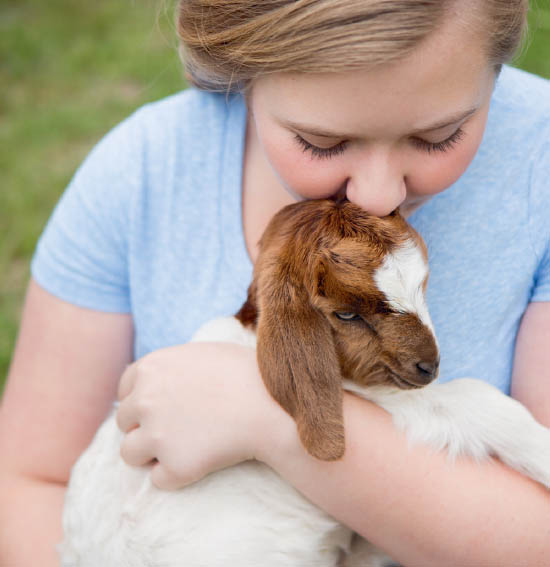
This image was created specifically for a stock image library.
Commercial photograph created for iFetch, LLC, to promote their dog ball–launching product.
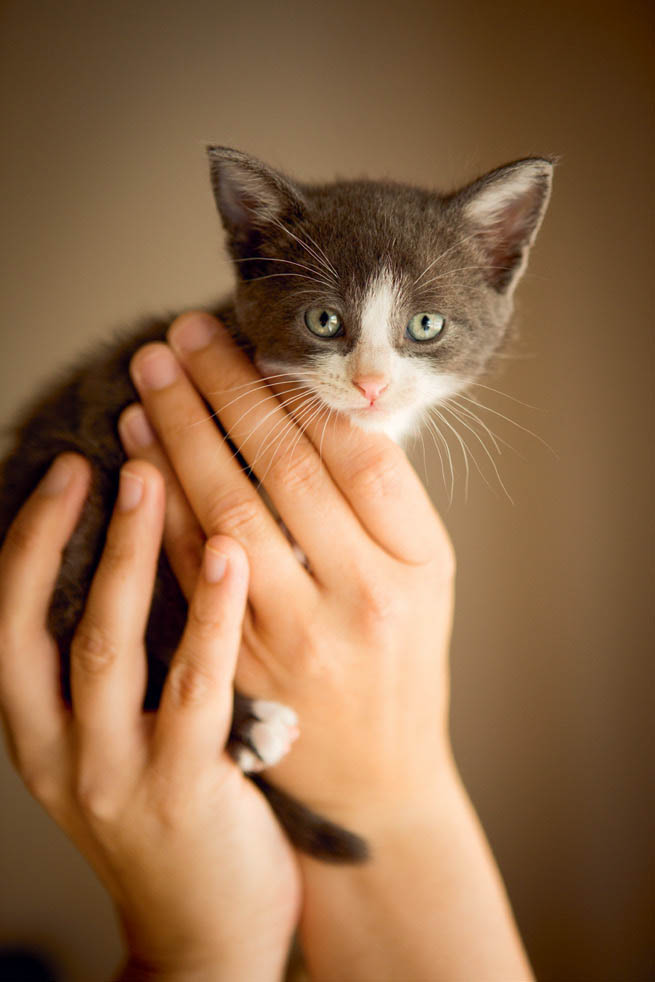
Image of a foster kitten available for adoption.
NONPROFIT ANIMAL-RELATED ORGANIZATIONS, as you’ll see throughout this book, provide opportunities for volunteer work, personal projects, and paid and unpaid collaboration on marketing projects.
FINE ART PHOTOGRAPHY involving animals has no limits. I recently started photographing animals specifically for use in my fine art photo encaustic artwork. Creating in this way is quite different from participating in commissioned portraits, animal-related businesses, stock photography, or commercial projects.
A collection of photo encaustic art pieces I created using images of animals.
Personal Pet Photography Projects
Regardless of where you decide to focus in your pet photography, I urge you to keep personal projects on your priority list. Personal projects are important for any artist, and pet photographers are no exception. These kinds of projects provide you with the opportunity to focus on a concept, event, person, or animal that interests you on a personal level, and allows you to approach the project with your own creative agenda in mind. The opportunities can vary greatly, and there are no rules about what can become a personal project. These endeavors can be based on personal connection and experience, a cause you want to support, curiosity, or simply a visual aesthetic that interests you.
HOW DO YOU START?
There are so many ways to start a personal project! It can actually be overwhelming and cause analysis paralysis resulting in (drumroll, please!) . . . no project. So let’s generate some ideas to get you started. Not all personal projects need to be grandiose, and sometimes simple is better. Maybe you decide to start by focusing on a particular type of pet, such as brown dogs, senior dogs, retired show dogs, horses, or cats in windows. You could photograph your own pets over a period of time or in a specific place you feel is meaningful emotionally and/or aesthetically. You might want to photograph dogs in front of famous places or landmarks in your area, or dogs you meet in the street when you’re traveling.
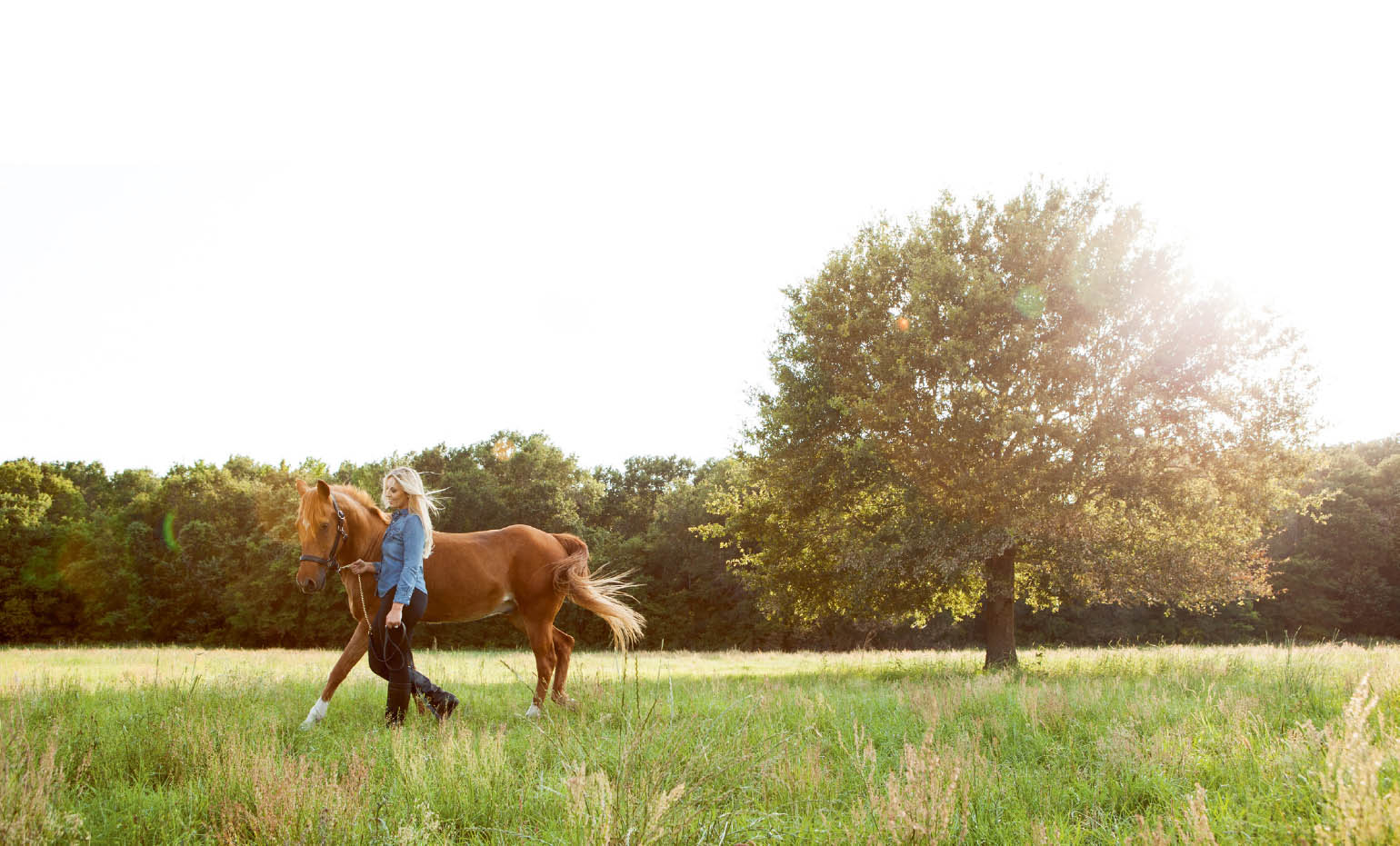
The most important factors in creating a personal pet photo project are having a curiosity about what you’re doing and having the primary reason you’re creating it be that you’re inspired. There is no client to make happy, and no promises given (aside from prints or images exchanged for participation, or fees for models, if applicable). This is your opportunity to create images for yourself, in your style, on your timeline. Personal projects can become something that you can’t stop thinking about. Those are the best ones! But don’t worry if you don’t become love-struck; not all personal projects have to start with an “aha! moment” in which you know exactly what you want to do, nor do they always result in unabashed connection.
NOW IS A GREAT TIME TO START A LIST! KEEP AN EASY-TO-ACCESS LIST OF IDEAS FOR PERSONAL PROJECTS. IF YOU HAVE THE SLIGHTEST CURIOSITY ABOUT SOMETHING, IT’S A PERFECT CANDIDATE FOR THE LIST. WHEN YOU ARE READY TO TAKE ACTION ON A PROJECT AND NEED IDEAS, YOU’VE GOT IT HANDY.
Start with something you have an interest in exploring. This is like a seed you can water by creating some photographs and seeing if that seed turns into a sapling and continues to grow. If it doesn’t, just move on and maybe come back to it. Or not. That’s fine, too.
PUTTING TOGETHER A PORTFOLIO OF PERSONAL WORK
Personal projects can often help fuel other areas of your creative work in ways you could not have predicted. If you’re just starting out in pet photography, you could consider all of your images of pets “personal work,” as you’re pursuing a subject matter that interests you and building your portfolio of work within your own timeline. If possible, consider asking a professional photographer to review your work and help you with editing to highlight your visual strengths. Have fun with it and notice what you’re drawn to.
ADDING TO YOUR PORTFOLIO FOR OTHER OPPORTUNITIES
Many businesses form as a result of what was originally a personal project. Your portfolio creation can serve as an entryway to your pet photography business. For those interested in pursuing a business, consider diving into a project that can potentially result in an incredible sampling of what you could create for a client, either as a commissioned portrait or in a commercial environment.
Exploring an aspect of pet photography for which you have curiosity or that ignites inspiration gives you “permission” to capture images with 100 percent of your own creative vision, using your own unique approach. This exploration is important, as creating portfolio images within your own parameters and timeframe is something that can be harder to achieve when you’re working for a client.
Having said all this, try not to place too much emphasis on the end result of personal projects in terms of how they will work for you on a business level, but rather, maintain an awareness of the possibilities.
PERSONAL PHOTOGRAPHY PROJECTS FOR NONPROFITS
It’s no secret that photography is a powerful and essential tool for communication. Nonprofit animal-related organizations rely on photography to communicate their message just as much as any commercial business selling a product or service. Quality photography is always in demand! If you have an interest in supporting animal-related nonprofit organizations, you might think about enlisting your photography skills and reflecting on the many ways you can be of support, while at the same time, feeding your passion for photography.
As I’ll discuss in Chapter 10, “Photographing For Nonprofits: Giving Back and Collaborating,” I am a huge advocate of bringing passion for photography to animal welfare groups. Not only do strong images help the organization by shining a visual spotlight on their mission, but they can also help animals directly. For example, your photography can highlight an animal’s character in a shelter while he or she is in need of a forever home, or your photographs can encourage donations for an animal in need of a costly surgery or treatment. Nonprofit animal-related organizations and their programs could also become the inspiration for personal projects, as I experienced when I photographed a personal project I named the Lifelines Project, which focused on honoring the bond between the homeless community and their pets. This project was directly inspired by a program run by an Austin, Texas–based animal welfare organization called Animal Trustees of Austin (which has now merged with a national organization called Emancipet). I’ll talk more about this project and how it unfolded later in the book.
Photographing for and collaborating with animal welfare organizations has given me a great deal of experience as a photographer and loads of satisfaction as an animal lover. I strongly suggest that you consider using your passion for photography and animals to support individual animals or animal welfare groups, or to generate awareness for causes you support, as this work can be tremendously rewarding.
Pops and Wednesday, photographed for the Lifelines Project, a personal project inspired by an animal welfare organization in Austin, TX.
RUNNING INTO CHALLENGES (BUT THEN JUMPING OVER THEM)
Encountering challenges throughout the pursuit of a personal project is inevitable. While preparing for all difficulties is impossible (trust me, I’m always trying), let’s address a few issues you might come across so you have a head start in overcoming them.
SOMEONE ELSE HAS ALREADY CREATED A PROJECT LIKE MINE.
Please don’t let this stop you! You have your own unique way of seeing and capturing photographs of animals. No one can do exactly what you’re doing, because they’re not you. If you find yourself inspired to pursue a project that seems like it has already been covered, try to consider how your interpretation might be different from someone else’s—and do your best to stay committed to being yourself.
Rather than spending time on what you are missing, either creatively or logistically, focus on what you do have to contribute. You may have different access to a special community or subject matter, you may implement a more documentary style, or you might photograph on location rather than in a studio, or choose black and white instead of color. Your vantage point might be different, you might incorporate a different style of lighting—there are endless possibilities. If the project is truly important to you and is lighting a spark for you creatively, go for it. Don’t stop the parade before it starts. You might be surprised by the direction it takes.
COMMITMENT
While there is no rule for how long you need to spend photographing personal projects, many photographers choose to commit to them for long periods of time—weeks, months, or even years. Your project may involve returning to a specific event year after year or photographing a pet throughout his or her lifetime. Staying committed to the project will enable you to truly explore the concept and allow it to expand and shift over time. Sometimes spending a lot of time on a project will help inspire other projects as well.
Be aware that personal projects often include some level of struggle, such as difficulty with logistics and technical aspects, and lack of creative inspiration or even questioning the project’s validity. If you’re really committed to developing your project, staying focused on pushing through those less-than-inspired moments is crucial. If you find yourself starting to struggle, it might be a good time to ask why and explore what you can change to help motivate you to move forward. Perhaps you can try a different lens or style of lighting, or talk to someone who can help you find interesting subjects or opportunities that align with your vision. Sometimes taking a break and doing something completely different can also allow you to jump back into creative projects with new energy and perspective.
FINDING SUBJECTS
Ideas for projects might come easily to you, but finding the subjects for your project may not be as simple, at least initially. For example, maybe you have the idea to photograph pugs on porches, but you don’t own a pug and you don’t know anyone who does. This might be a challenging way to launch a project, but do your best not to let this obstacle deter you from moving forward. A simple Internet search can get you started on developing a list of people and organizations that may have access to pugs. Reach out to individuals, organizations, and businesses that are connected with pugs, and let your connections guide your next steps.
When you start photographing, be sure to mention to those you’re working with that you’re looking for more subjects to photograph for your project. You might be pleasantly surprised by the efficacy of word of mouth once you begin. The key is to start with finding out who has large-scale access to the subjects you’re interested in photographing, and see what happens from there.
Pet Photography as a Collaboration
Creating strong images of pets is a collaboration of all involved, and acknowledging that will help you create stronger images and enjoy the process much more. Connection needs to be made between the photographer and animal on some level so the pet can have a positive experience and engage with the camera (if that’s the goal) to create strong photographs. Collaboration also needs to take place between photographer and pet parent or anyone responsible for the animal (as in the case of animal welfare situations). This may involve directly communicating with the pet parent on your goals for the images and how you need them to participate (or not participate), or the energy required of them if they are being photographed with their pet. Collaborating with nonprofit organizations starts with having a common goal for the images and vision for how those images can become a reality.
Opportunities to Respond
Photographing pets allows for the opportunity to respond to a variety of situations and scenarios creatively. These opportunities support you in developing skills that collectively contribute to a solid “resume” for you as a pet photographer. Let’s take a look at just a few ways you can use these opportunities to continue to develop your skills.
ENVIRONMENT AND LOCATION
Creating images on location involves a great deal of problem solving. Location shooting requires a creative response so that the visual chaos can be organized to capture a strong image. In addition to these problem-solving opportunities, you have the chance to navigate how to best include an animal within any given environment in (typically) a finite amount of time. As the environment changes, so does your opportunity to visually problem solve.
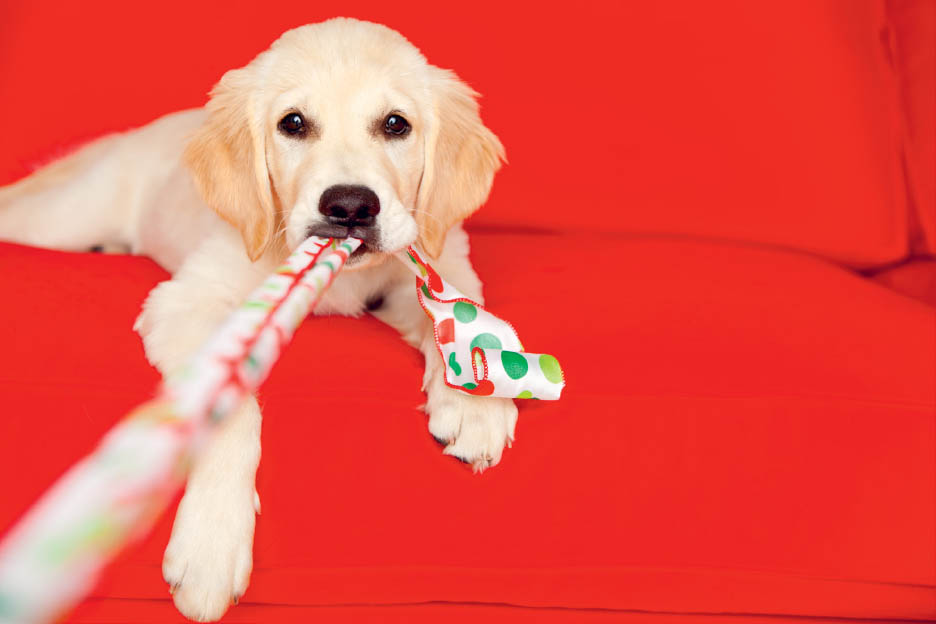
MOOD AND ENERGY OF ANIMALS AND PEOPLE
Photographing pets, either individually or with people, offers a tremendous opportunity to practice communication skills. Learning how to engage and react to the energy of your subjects is quite important and a skill that can be nurtured. Not only does the energy affect the experience, but also the results. Later, I will discuss how to navigate these interactions.
ANIMALS AND PEOPLE WHO ARE INTRIGUING
I’ve met some of my best friends and favorite people as a result of my involvement in pet photography. I’ve also had the chance to meet and photograph some absolutely incredible animals—what a gift!
DESIGN
As pet photographers, we are invited to visually respond to all of the compositional elements we know and love: light, color, shape, line, texture, and more. Just because we may be photographing a beautiful creature doesn’t mean these elements are less important. Instead, they’re juggled into the mix! With practice, you’ll be able to be more intentional when incorporating design elements into your frame.
COMMUNITY
I strongly value the community I’ve encountered as a direct result of my life as a pet photographer. Even if you are photographing as a hobby, you’re bound to increase your community with both individuals and organizations.
OUTLET FOR CREATIVITY AND INTUITION
Photographing pets is an excellent outlet for cultivating your creativity and intuition. It can be quite satisfying to pre-plan your images of animals with a specific concept in mind. (I am a huge planner!) I typically have a few ideas in mind for all of my sessions, but many of my favorite images were not planned, but became available to me as I responded in the moment. While it can be a little more pressure not to have a plan in mind for all of your images, having the ability to respond intuitively is an opportunity for creative growth.
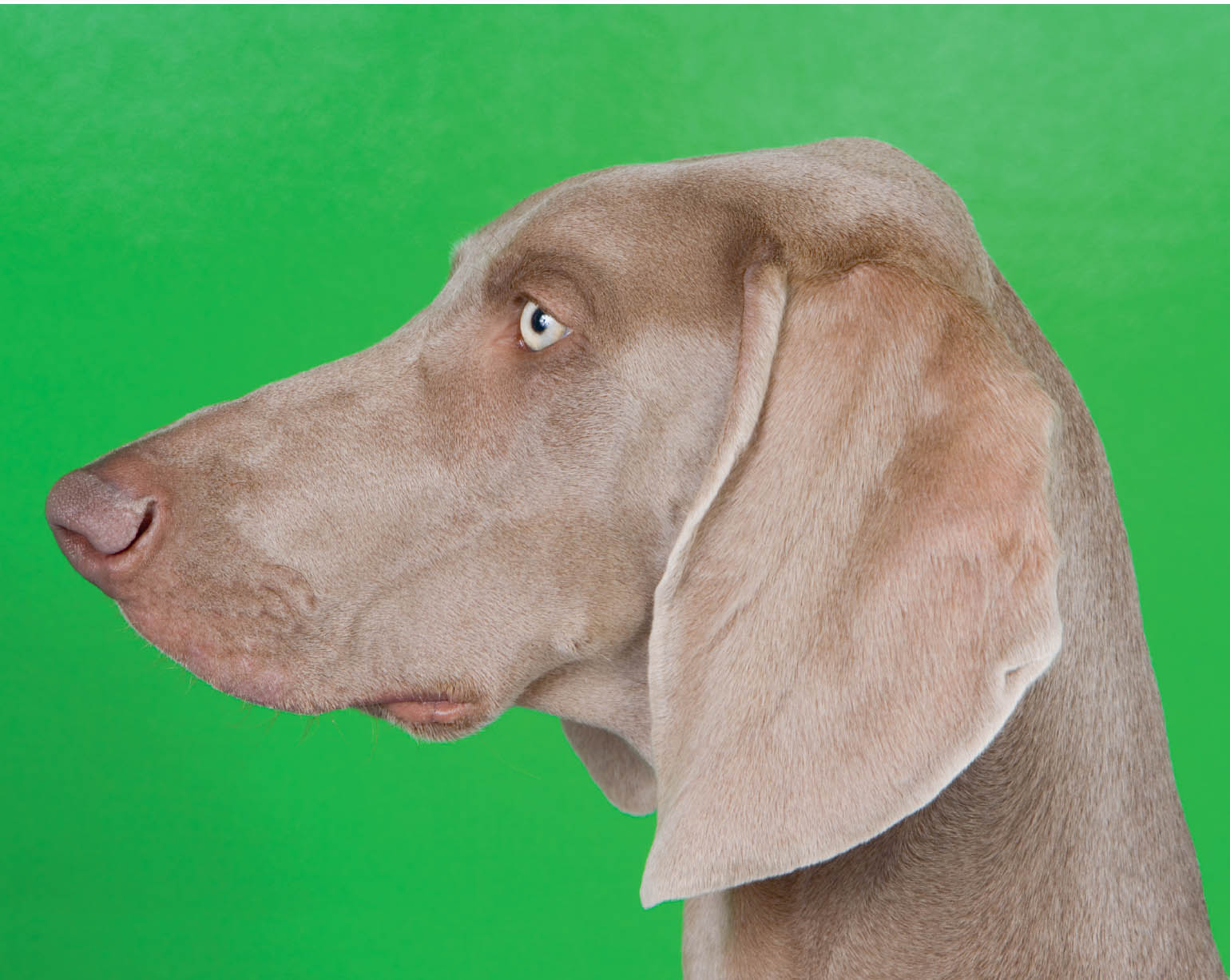
One positive side effect or reward of pet photography is experiencing “flow.” In my practice, these are moments when I am so focused or tuned in to what I am doing that I lose track of time. During these periods, one action seems to flow into the next with ease. When I am experiencing flow, I find that I am fully present in the moment and in my activity, and as a result, creativity has a greater chance to enter into the equation. Unfortunately, this state doesn’t offer itself up as a result of force or pushing too hard. Even though I haven’t quite figured out how to make flow occur with regard to pet photography, I have noticed the following can help build a starting platform.
LEARNING THE TRICKS OF THE TRADE
We can exchange the word tricks for the word tools, because really, that’s what we use in pet photography. And because animals are so different from one another and their attention spans are shorter than humans’, we need lots of tools. Having a strong grasp of the options available to you can not only help you capture the images you’re trying to create, but can also bring a lot more ease into the situation. Knowing that you have tools to help allows you to focus more on the creative aspects and allow inspiration and, ultimately, flow to enter more easily.
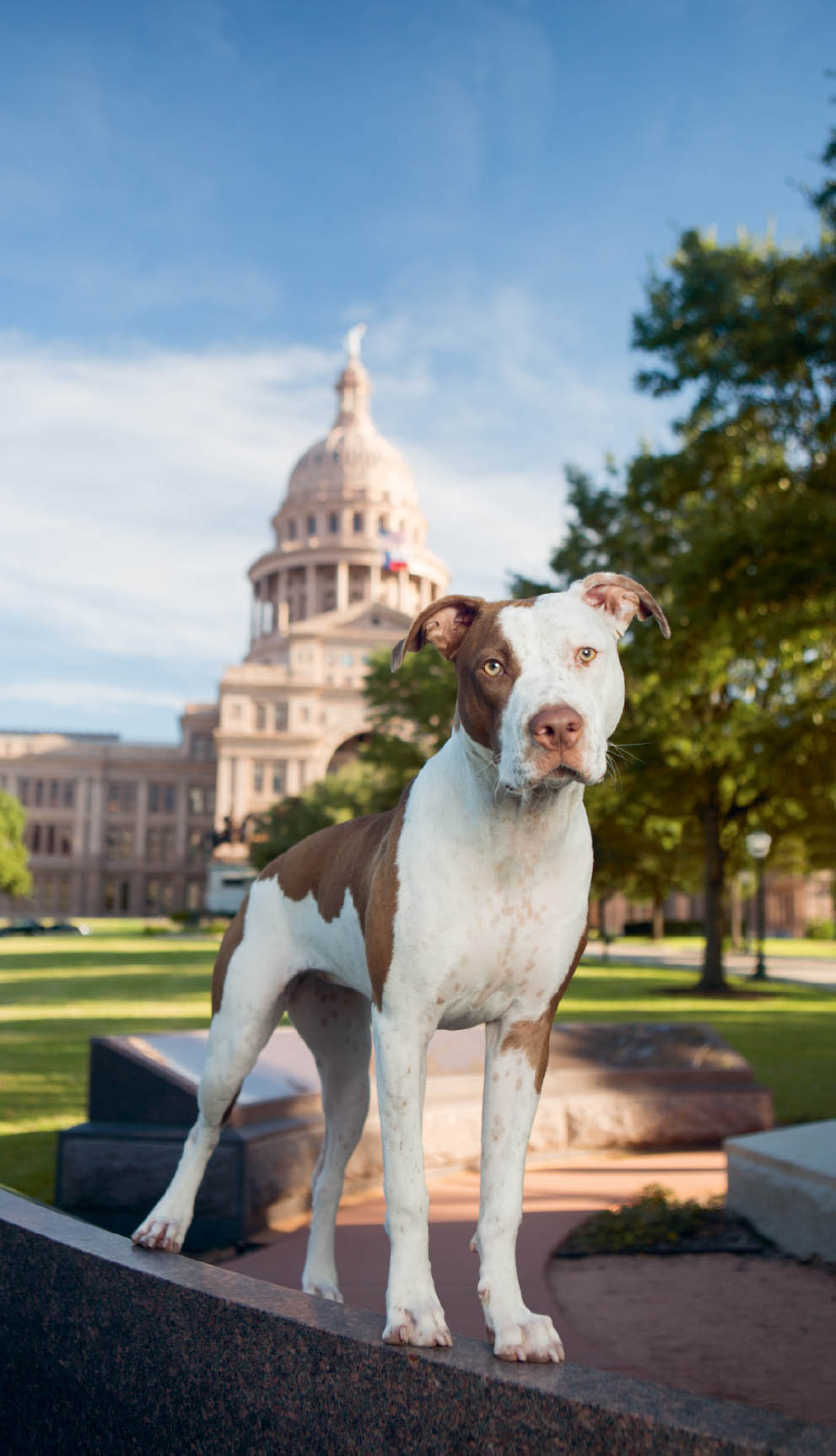
Beautiful Gidget, photographed for a project with Tomlinson’s pet food stores in Austin, Texas, definitely inspired flow within my photography practice.
PRACTICE
Knowing which tools are available and knowing how and when to use them are completely different. My hope is that this book will provide you with many tools and ideas on how to use them. These tools will not be of much use to you, however, if they are not put into practice—just like buying a bunch of equipment will do nothing for you if you never learn to put it to use. Learning how to be comfortable directing people and animals takes practice. Photographing subjects who may or may not do what you want them to do exactly when you want them to do it takes practice. Learning how to troubleshoot situations requires repetition and putting yourself in a variety of situations. Pet photography asks that you respond creatively to situations based on the needs of a client (if applicable), the animal’s behavior, technical elements, aesthetics, and so on. This all takes practice!
As you start to develop your practice of pet photography, do your best to be kind to yourself and understand that if you haven’t had much practice, pet photo shoots might be a bit overwhelming. They will always be challenging on some level, but that is what keeps things interesting.
How should you practice? I highly suggest starting with low-pressure scenarios. Photograph your own pet or a friend’s pet, and let anyone you’re enlisting know that you’re building your pet photography portfolio. Set some parameters for yourself so it’s not too overwhelming. Perhaps you want to play with capturing motion outdoors during one session; and then the next time, photograph with a documentary style, implementing natural light indoors; and move to more posed studio-lit portraits during a different session.
Give yourself time and space to make mistakes and try new techniques, because this allows for growth. It has helped me in recent years to think of pet photography as a practice, much like a yoga practice. Just like showing up on your mat in yoga practice is where the transformation begins, showing up with your camera to practice with your tools is an integral part of improving your pet photography.
In my photographic practice, I strive to stretch myself creatively, while at the same time, recognize that if I push too hard with something that isn’t working technically, for example, or if the pet isn’t cooperating to make my vision a reality, I am not likely to obtain the results I want. If I am forcing the situation or obsessing about getting the perfect shot with no room for flexibility, I will most likely miss out on beautiful images and certainly on the opportunity to experience flow during my photo shoot. Practice directly impacts flow.
EXPERIENCE WITH PETS AND UNDERSTANDING PET BEHAVIOR
The more you understand pet behavior, the more prepared you will be during the shoot to react quickly and appropriately. A knowledge of animal behavior through experience helps make the photo sessions more fun for everyone involved. If we are able to notice the reactions of the animals to their environment, our presence, and our actions as photographers, the more flow can occur.
I learned a great deal about animal behavior (dogs and cats, specifically) from volunteer work in animal shelters. I’ll explore this more deeply in chapter 10.
PASSION FOR ANIMALS
I photograph animals because I love and respect them, and when I get to interact with them and honor them visually through my photographs, I am setting myself up to get lost in the moment. I can’t imagine getting seriously involved with pet photography if I didn’t have passion for animals. Having a sincere affinity for animals is a definite head start to finding flow in your pet photography.
NO FLOW? NO WORRIES
Finding some sort of flow is, in the big picture, a goal for all of my creative endeavors. Ideally, I want to spend my time so engrossed in my actions and creative process that I lose time and space. I want to have so much fun that the hairs raise on the back of my neck, and I can think of doing nothing else in that moment. But . . . this doesn’t always happen. If you have never experienced flow in your work, consider paying attention to those elements that support your ability to get pleasantly “lost” in your pet photography practice.
I hope you are starting to see the many possibilities that exist with regard to pet photography, and perhaps you are already generating some ideas about how you might like to pursue this rewarding genre.
